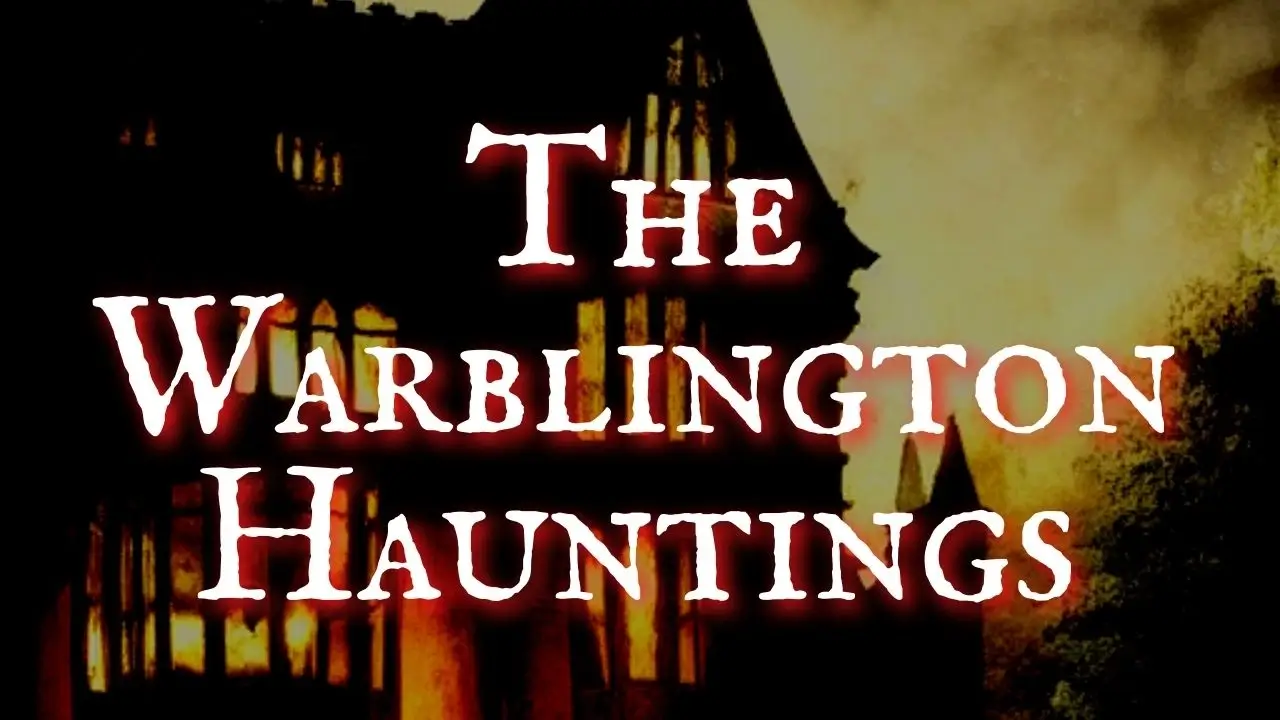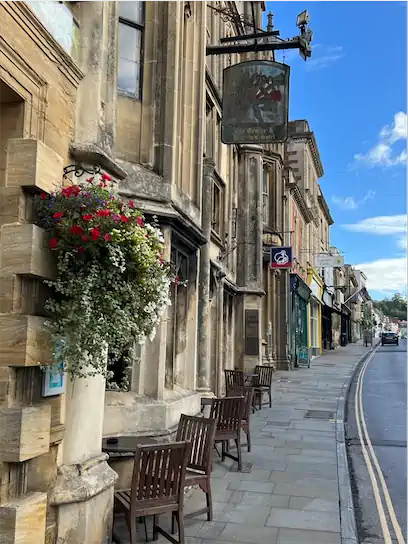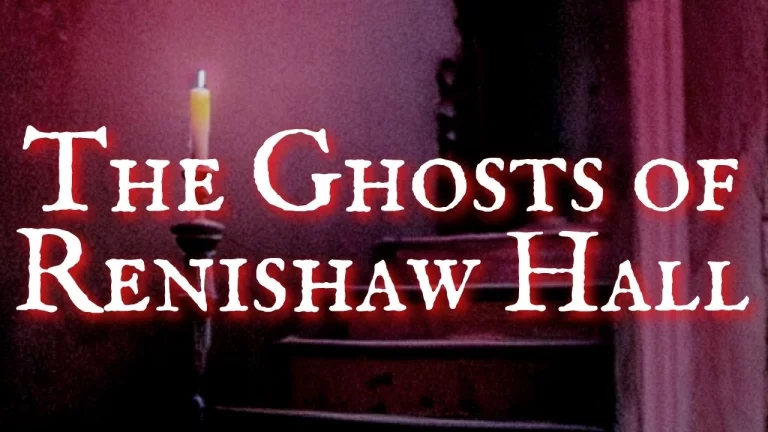The Warblington Haunting: Who Were The Ghosts Seen In A Hampshire House?
Warblington Ghosts

The Letter
The following letter from John Caswell, the 18th century Oxford mathematician, was found among the papers of Richard Bentley, a classical scholar and master of Trinity College Cambridge.
“Sir, when I was in London, April last, I fully intended to have waited upon you again, but cold and lameness seized me next day.
The cold took away my voice and the other my power of walking. So I presently took coach for Oxford. I am much your debtor and in particular for your good intentions in relations to Mr. D, though that, as it has proved, would not have turned to my advantage. However, I’m obliged to you upon that and other accounts, and if I had opportunity to show it, you should find how much I am your faithful servant.
I have sent you enclosed a relation of an apparition story I had from two persons who each had it from the. And yet their accounts somewhat varied and passing through more mouths have varied. Still more therefore, I got a friend to bring me to the authors at a chamber where I wrote it down from the author’s mouth, after which I read it to him and gave him another copy.
He said he could swear to the truth of it. As far as he’s concerned, he is the curate of Warblington, Bachelor of Arts of Trinity College in Oxford, about six years standing in the University. I hear no ill report of his behaviour here. He is now gone to his curacy. He’s promised to send up the hands of the tenant and his man, who is a smith by trade and the farmer’s man, as far as they’re concerned.
Mr. Brereton, the rector, would have him say nothing of the story for that he can get no tenant, although he has offered the house for 10 pounds a year less. Mr. P, the former incumbent, whom the apparition represented, was a man of very ill report, supposed to have got children of his maid and to have murdered them.
But I advised the curate to say nothing himself with this last part of P, but leave that to the parishioners who knew him. Those who knew this P say he had exactly such a gown and that he used to whistle.
Yours, Jay Caswell. “
The Story of the Black-Cloak Ghost
So that’s the letter, and this is the narrative:
“At Warblington, near Havant in Hampshire, within six miles of Portsmouth in the parsonage house, dwelled Thomas Perse, the tenant, with his wife and a child, a manservant, Thomas, and a maidservant.
About the beginning of 1695, on a Monday, about nine or ten at night, all being in bed except the maid with the child and the maid being in the kitchen and having raked up the fire, took a candle in one hand, and the child in the other arm and turning about, saw one in a black gown walking through the room, and then out of the door into the orchard.
Upon this, the maid hasting upstairs having covered but two steps cried out on which the master and mistress ran down, found a candle in her hand. She grasping the child around the neck with the other arm; she told them the reason of her crying out. She would not that night, tarry in the house, but removed to another, belonging to one Henry Salter farmer where she cried out all the night from the terror she was in.
And she could not be persuaded to go any more to the house on any terms.
On the morrow, Tuesday, the tenant’s wife came to me, lodging then at Havant to desire my advice, and have consult with some friends about it. I told her I thought it was a flam, and that they had a mind to abuse Mr. Brereton, the rector, whose house it was.
I told her I would come up or sit up or lie there as she pleased. For then, as to all stories of ghost or apparitions, I was an infidel. I went thither and sat up the Tuesday night with the tenant and the manservant. About 12 or one o’clock, I searched all the rooms in the house to see if anybody was hid there to impose.
At last, we came to a lumber room there. I smiling, told the tenant that was with me that I would call for the apparition and oblige him to come. The tenant then seemed to be afraid, but I told him I would defend him from harm, and then I repeated ‘Barba, celarunt darii , et cetera on this. The tenants countenance changed, so that he was ready to drop down with fear.
And I told him I perceived he was afraid and I would prevent it coming, and repeated ‘Baralipton, et cetera.’
Then he recovered his spirits pretty well, and we left the room and went down into the kitchen where we were before, and sat up there the remaining part of the night and had no manner of disturbance.
Thursday night, the tenant and I laid together in one room and the man in another room, and he saw something walk along in a black gown and place itself against the window, and there stood for some time and then walked off.
Friday morning, the man relating this; I asked him why he didn’t call me, and I told him I thought that it was a trick or a flam.
He told me the reason he didn’t call me was that he was not able to speak or move.
Sunday night, I lay by myself in one room, not that where the man saw the apparition. And the tenant and the man in one bed in another room and betwixt 12 and 2 am. The man heard something walk in their room at the bed’s foot and whistling very well, and it lasted, came to the bedside, drew the curtain, and looked on them.
After some time it moved off. Then the man called to me, desired me to come — for that there was something in the room that went about whist. I asked him whether he had any light or could strike one. He told me no.
Then I leaped out of bed and not staying to put on clothes. Went out of my room and along the gallery to the door, which I found locked or bolted.
I desired him to unlock the door for that I could not get in. Then he got out of bed and opened the door, which was near, and went immediately again to bed.
I went in three or four steps and it being a moonshine night; I saw the apparition move from the bedside and clap up against the wall that divided their room and mine.
I went and stood directly against it within my arm’s length of it and asked it in the name of God what it was that made it come disturbing of us.
I stood some time expecting an answer and receiving none, thinking it might be some fellow hid in the room to frighten me, I put out my arm to feel.
And my hand seemingly went through the body of it and felt no manner of substance till it came to the wall.
Then I drew back my hand, and still it was in the same place. Till now I had not the least fear and even now had very little. Then I adjured it to tell me what it was when I had said those words, it, keeping, its back against the wall, moved gently along towards the door. I followed it and it going out of the door turned its back towards me.
It went a little along the gallery and it disappeared where there was no corner for it to turn, and before it came to the end of the gallery where there was stairs. Then I found myself very cold from my feet as high as my middle, though I was not in great fear. I went into the bed, betwixt the tenant and his man, and they complained of my being exceedingly cold.
The tenant’s man leaned over his master in the bed and saw me stretch out my hand towards the apparition and heard me speak the words. The tenant also heard the words. The apparition seemed to have a morning gown of a darkish color, no hat, no cap, short black hair. A thin, meagre visage of a pale swirly color seemed to be of about five and 40 or 50 years of age, the eyes half shut, the arms hanging down the hands visible beneath the sleeve of a middle stature.
I related this description to Mr. John Ladner, rector of Haven, and to major baton of Langston in Haven Parish. They both said that the description agreed very well to Mr. P, a former rector of the place who’d been dead for 20 years.
Upon this, the tenant and his wife left the place, which has remained void ever since.
The Monday after last Michaelmas day, a man of Chodson in Warwickshire, having been at Havant Fair, passed by the aforesaid Parsonage house about nine or 10 at night, and saw a light in most of the rooms of the house, his pathway being closed by the house.
He, wondering at the light, looked into the kitchen window and saw only a light, but turning himself to go away, he saw the appearance of a man in a long gown. He made haste away the apparition, followed him over a piece of glebe land of several acres to a lane, which he crossed, and over a little meadow. Then over another lane to some pales, which belonged to farmer, Henry Salter, my landlord, near a barn in which was some of the farmer’s men and others.
This man went into the barn, told them how he was frightened and followed from the parsonage house by an apparition, which they might see standing against the pales if they went. They went out and saw it scratch against the pales and make a hideous noise. It stood there sometime and then disappeared.
Their description agrees with what I saw. This last account I had from the man himself and also from the farmer’s man,
Thomas Wilkins, Curate of Warblington. December the 11th, 1695.
Further Research
You may wonder where Warblington is. It turns out it’s near Havant in Hampshire, just near Portsmouth.
I had a look on Google Maps as you do, and I found that when I called up street-view, the first thing I saw was a narrow, tree-line lane called Pook Lane.
None of articles I’ve found mention this, but a pook is a word for a fairy or a ghost. — think of Puck in A Midsummer Night’s Dream, and the Irish púca and the Welsh bwga or bwci, which is Northern English and Scots is a ‘boggle’ or a ‘boggart’.
So, it would seem that at some time the lane had a reputation for supernatural occurrences in order for it to be called that.
In Quatermass and The Pit there was Hobbs Lane, and a ‘hob’ is another name for a spirit.
Also nearby are the ruins of Warblington Castle. It’s here that ghost of Margaret Pole, the Countess of Salisbury, who wanders around this area without her head. The ghost of a smuggler is also supposed to haunt the ruins of this castle.
The History and Geography of Warblington

An entry from 1908 tells me that Warblington, in the Civil parish of Warblington, governed by Warblington Urban District Council, extends over 3,254 acres and includes the ecclesiastical parishes of Warblington and Emsworth, and a part of Roland’s Castle. The village, which lies on the main road from Southampton to Chichester, consists of a few houses clustered about the crossroads. That was in 1908. There are a few more now.
One way, curving around by the village pond, leads northwards to Eastleigh, and another, known as Pook Lane, winds its way through the meadows to Langstone Harbour. Most of the southern part of the parish is well watered pastureland. Of the whole parish, 663 acres are arable land, about 800 acres pasture land and 425 acres are covered with wood.
The streams serve to work water mills, one of which is mentioned as apurtenento the manor. In 1086, while another stood at the tithing of Netibridge at the east end of the village, a lane leads southwardss past the avenue leading to the rectory house to the castle — a comparatively modern house with farm buildings conspicuous only for the ruins of a tall 16th century gateway.
At the end of the lane stands,the church with several fine new trees in the churchyard, one to the southeast being a notable specimen, and across the graveyard there are glimpses of the channel between Hayling Island and the mainland.
The soil here is chalky, but further north it is clay. It says the whole of the northern part of the parish is thickly wooded. Lee Park, the residence of Sir Frederick Fitzway, Baronet, is surrounded by oaks, larches, and firs, and it talks about the gentry. So this is dated 1908, and it’s busier now because it’s looks like it’s pretty built up.
Warblington manor was once a part of Westbourne in Sussex, which was part of the land that Anglo-Saxon Earl Godwin owned. This is before the Norman Conquest. On Earl Godwin’s death, Warblington was probably inherited with its tithing of Newtimber by Earl Harold, who fought the Conqueror, and who famously ended up with an arrow in his eye.
After the conquest, the man was granted to Roger, Earl of Shrewsbury, who died in 1084.
There was a Roman villa hereabouts, and then in about 500 AD, Weorbold came to found his village of Warblington. ‘Tun’ is Anglo Saxon for a farm.
So Warblington is Weorbling Ton. That ‘bald’ bit is in Archibold and Theobald, and the bald doesn’t mean bald. In Anglo Saxon, it means bold, and it’s a common Germanic term across Germanic Europe.
The -ing part means ‘the people of’ so Weorboldingtun is the farm of Weorbold’s people.
Dy the time of the Doomsday Book in 10 86, Warblington had a population of about 120.
In the 14th century, a castle was built, and then the manor of Warblington came into the possession in 1514 of Margaret Pole, Countess of Salisbury and sister and heir to Edward Earl of Warwick. And she built a large fortified house between 1515 and 1520. This house at Warblington had a moat, state rooms, its own chapel, apartments, and an armoury surrounding a great courtyard.
She was the daughter of George of Clarence, who was the brother of King Edward IV and King Richard III.
So she was very well connected. She was one of the two women in 16th century England to be a peer in her own right with no title husband. She was given in marriage by Henry II to his cousin, sir Richard Pole.
Pole being a Welsh name: Ap Hywel.
And of course, the Tudors were a Welsh family originally, although they forgot that pretty soon when they got the crown of England, when Henry VI landed on the coast of Wales, he was supported by the Welsh, on the grounds that he was ‘Y Mab Darogan’, the prophesied son who would free them from the rule of the English.
So was going to be Prince of Wales, and he was going to free them all. And then he thought,
“well do you know what? I can be king of England. And that’s a bigger deal — more money involved. So I think I’ll stick with that, And you Welsh guys, thanks, but see ya!”
So there we go. So they felt very betrayed by that. But he, he promoted his friends.
So let’s get back to get back to Margaret Pole, who built the big fortified house at Warblington.
She had multiple links with the Royal Family and she had a dispute over a land with Henry II in 1518.
However, in 1520, she was back in favour and was appointed governor to Henry’s daughter, Mary. This was Princess Mary, ‘Bloody Mary’ a Catholic.
Mary, as you know, was declared a bastard. In 1533, the Countess Pole stood by Mary and refused to give Mary’s plate and jewels back to Henry.
And then when Mary’s household was broken up at the end of the year, argaret wanted to continue to serve Mary, but was not permitted.
Margaret had four sons, all ambitious, and when they became involved with the Duke of Buckingham, Margaret found herself removed from court and from favor.
All the family got arrested because they were Catholics.
So, this is where we get to the bit that explains why she wanders around with no head
Margaret Pole was held at the Tower of London for two and a half years until she was taken to executioner’s block fighting fiercely all the way. So that’s how she’s in Hampshire, walking around without a head.
Although how she got from London to Hampshire without a head always mystifies me. It’s like all the ghosts of Mary, queen of Scots — she’s all around the place. How does she move around so fast?
But they’re ghosts,, so, they can do what they want.
After Margaret Poll’s unfortunate End Warblington Castle came to the Cotton family in the mid-1500s. Years later, during the English Civil War, the Cottons were Royalists, and the Parliamentarians destroyed the large fortified house, leaving only a tower and part of the gatehouse standing. The rest of it’s gone. Though an old farm stands on the site, and that was the location for the 1975 film, Tommy with The Who.
This idea of Margaret Poe wandering around without a head is a kind of traditional ghost stories. Nobody can remember seeing her. It’s just one of those things.
It’s a sort of idea that because she was associated with the place and she had her head cut off, she’s bound to haunt it without her head. Because we like headless ghosts.
The story that we heard at the beginning has nothing to do with Warblington Castle or the old Manor House; it’s to do with the house not far away that was investigated by the curate in the 1690s.
Christine Norman’s Article
I was very fortunate to find an article by Christine Norman, who was Christine Housley, who taught local history and adult education for over 20 years.
She was general editor of a series of booklets entitled “The Making of Havant” and researched and wrote the history of the Catholic Church in Havant, recording the survival of the old faith in the area through penal times.
Of course, penal times lasted until 1766 and the Emancipation Act of 1829, before which it was illegal to be Catholic in England.
Previous to that, it was illegal — you’d be arrested and maybe even executed up as we’ve just heard about poor Margaret Pole.
But Christine Norman’s story is about the Black Cloak Ghost, or the Whistling Ghost, who was thought to be Mr.P, the previous rector who murdered his children and his ghost.
This is the same story and recorded in our letter above
This Mr. P, who is now revealed as Sebastian Pitfield, the rector of Warblington, who was presented to the Living in 1671 by George Cotton, who we’ve heard of, of Warblington Castle.
So George Cotton appears to still have the House of Warblington Castle, even though because of their support for the royalists, they got it smashed down, but they didn’t lose it.
The ghost appeared in a house called Parsonage House. which still stands.
Parsonage house stands pleasantly in the midst of the Glebe. (glebe is a word for church land. It’s a land owned by the church. And Glebe Cottage is a cottage owned by the church. )
This parsonage house is obviously where the parsons who served the church lived. They would be Anglicans, they would not be Catholics.
Eileen Ford, who lived in one of the flint cottages at the north end of Pook Lane near the Havant Road, remembered that those from Pook Lane attending services in Warblington Church were allowed to take a shortcut through The Rectory Garden and down an avenue, which led to Church Lane before the construction of the present Link Road.
This diversion was known locally as the Sunday Walk.
However, this story concerns the parsonage house, now known as the Old Rectory. Mostly her article repeats what we already know from the letter above, but there are little gems given too.
In defence of the ghostly, whistling and murderous rector, a Mr Butler comments this rector was alluded to in a ghost story, and was stigmatized as a libertine and a murderer. It was said that Pitfield had got children of his maid and to have murdered them. Butler stressed that there was no evidence to suggest that the rector was anything other than eminently respectable.
His signature in the church records showed he discharged these duties regularly, and presided at vestry meetings. So he couldn’t have murdered anyone if he was diligent at his work.
The story of his misdeeds was based on the authority of a curate, Mr. Wilkins, in whose letter we’ve heard the full story of the happenings at Warblington rectory.
Mr Butler, from 1817, suggests that the black cloak ghost might have been a tale put about by the smugglers. The situation of the house favours the practice of smuggling, which was then very prevalent, and for which it has been used in the absence of former rectors. It is known from other sources that smuggled goods were landed on the beach at Warblington and transported inland via Pook Lane.
Pook Lane was for time locally as Spook Lane.
In a similar way, ghost stories connected with the Langstone are thought of being encouraged by the smugglers to deter visitors.
However, the account written by Mr. Wilkins, an educated man of the cloth, is very detailed, and Mr. Wilkins himself started his ghost watching as a convinced skeptic.
Whatever the truth of this story, says Christine Norman, it is at least comforting to reflect that the apparition has never again been seen at Warblington.
Another note at the end says about Margaret Pole,
“The headless lady at nearby Warblington Castle. She was said to drift headless across the lawn from Warblington Church, through the church out and across the fields.”
The present owners of Warblington Castle House have lived there for 23 years and had no spooky experiences. Their predecessors, however, used to hear unexplained sobbing in an upper corridor.
Lady Margaret has now been created the Blessed Margaret and is at rest. So Lady Margaret Pole, for her martyrdom for the Catholic faith, is now blessed.
I don’t know if you’ve ever read a book called Moon Fleet by John Mead Falkner. I read that when I was a kid. It’s about smugglers pretending to be ghosts.
It was a fantastic book, and I saw a movie version of it with Ray Winstone in 2013. It was a TV miniseries. It was really superb. There had been a previous series in 1984,
15-year-old John Trenchard meets the Innkeeper Elizer in the town of Moonfleet. You hear about a mysterious legend of Blackbeard and a treasure, but it turns out it’s the evil pirates with their rum
Are The Warblington Hauntings True?
It strikes me as extremely detailed. It strikes me as probably true, but then, of course, what happened to the ghost after that? It’s never been seen since.
I think this may have happened. On The Classic Ghost Stories Podcast, they’re fictional stories and fictional stories have a beginning, middle, and an end. They have a structure to them, and they have a point very often. Even in folk stories about ghosts, oral traditions, they have a purpose to warn people, to remind people of correct behavior to right wrongs.
That’s the purpose of a ghost, and always has been.
But when we get these true accounts that start to come through when we get documentation, so when people start writing journals.
So we’re talking about from the 15 hundreds, I guess not much earlier, and people recount their experience. Like this guy in the gown, he’s not come to do anything. It’s just a vision.
We allow for some exaggeration. I remember when I was a kid, we had an experiment in the UK whereby we didn’t have we didn’t change the clock in the summer.
And one year it was very dark when I was going to school, and I’d be 11. We used to play out in the back of the school that looked over the fields. Our playtime was at 10 o’clock when it was still dark. And we’d look out, and there was the old St. Mary’s Church tower and, and we used to say, ‘oh, did you see the ghost? ‘
And we convinced ourselves that we’d seen the ghost.
Okay. We were kids. But you know, I think this can happen. People make things up without realising they’ve made them up, but the are rarely as detailed as the Warblington Ghost.
Also these accounts seem meaningless, pointless, and that in a way convinces me that there may be some veracity to them.
There’s something about this that makes Mr. Caswell go and speak with Wilkins, the curate who wrote the letter. It’s like the early scientific investigation of the paranormal.
So what do I think? Hand on heart, smugglers and tales growing in the telling aside — hand on heart. I believe there was a ghost.
I’m not convinced about Margaret Pole. I think that is too stereotypical and, and it, and it ties in with folk tropes, but this doesn’t, it just has an authentic air to it.
but what happened to the ghost? Well, I believe ghosts fade away over time.
There’s a lot, I don’t know about ghosts, but I do believe they do exist. I also believe some people are more likely to see them than others.
So for the Warblington Ghost, I accept it as real.
Related Posts You Might Enjoy:
Did A Ghost Speak Through A Machine Or Were The Dodleston Messages Fake?
Ghostly Events At Hinton Manor
The True Story of the Cheltenham Poltergeist




